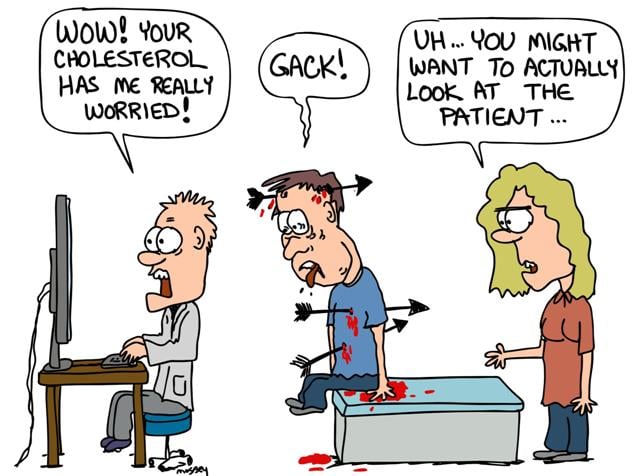EHR Incentive Programs - Cleaning Up the Mess

Earlier this month, the Obama Administration disclosed that it is working on "an important transition" for Electronic Health Record incentive program. They claim to be working with physicians to make improvements in technology to best support clinicians and their patients. Updates are promised in the coming months.
Since 2009, the federal government has herded providers into adopting electronic health record systems (often counter to their own desires) by providing incentives for early adopters and disincentives for laggards. While there are benefits from digitizing patient records, an antiseptic relationship with our care providers has resulted. Doctors are being forced to focus on feeding medical records into their increasingly disconnected information silos.
EHR has changed patient interaction
The entire doctor-patient relationship has been profoundly impacted by EHR.
Doctors spend much of their limited time they have with patients typing notes into their EHR. Eye contact and the personal relationship that most of us would prefer from someone who is the most intimate with our health, has now been reduced to the seconds between hunting and pecking on the keyboard.
 But perhaps worse than reduction in patient attention, each of our health care providers feeds a different electronic records monster. Go to an orthopedist and she has one species of EHR. Your cardiologist has another. Get admitted to your local hospital and you may find that the records they have are jumbled and inconsistent.
But perhaps worse than reduction in patient attention, each of our health care providers feeds a different electronic records monster. Go to an orthopedist and she has one species of EHR. Your cardiologist has another. Get admitted to your local hospital and you may find that the records they have are jumbled and inconsistent.
Much of this tower of babel has been an unintended result of the federal government’s EHR incentives. While patients are the starring attraction in the real life drama of their medical care, their data housed in these disparate EHR systems are controlled by physicians or administrators. Throw in medical images, which are in fact owned by whomever captures the image, and what you have is a tug of war over your medical records.
How can we solve disparate patient health records?
So if my 85-year-old mother needs my help coordinating her care, I’d likely have to consult her hospital(s), primary care physician, imaging center, orthopedist and … quite an awesome task to coordinate all of her health information.
Until medical records become the purview of the patient… until it is easy for patients to review, validate and ensure consistency of their medical records… until providers are able to contribute to a single source of information… until this information can follow the patient wherever he or she may end up needing treatment, electronic records may please our federal government but they are far from serving the patient.
So, why does medical information have to be so disconnected? We don’t know. That’s why we made it one step easier with PACS +EHR integration. Learn more about how you can connect your patients’ medical images with electronic health records.


